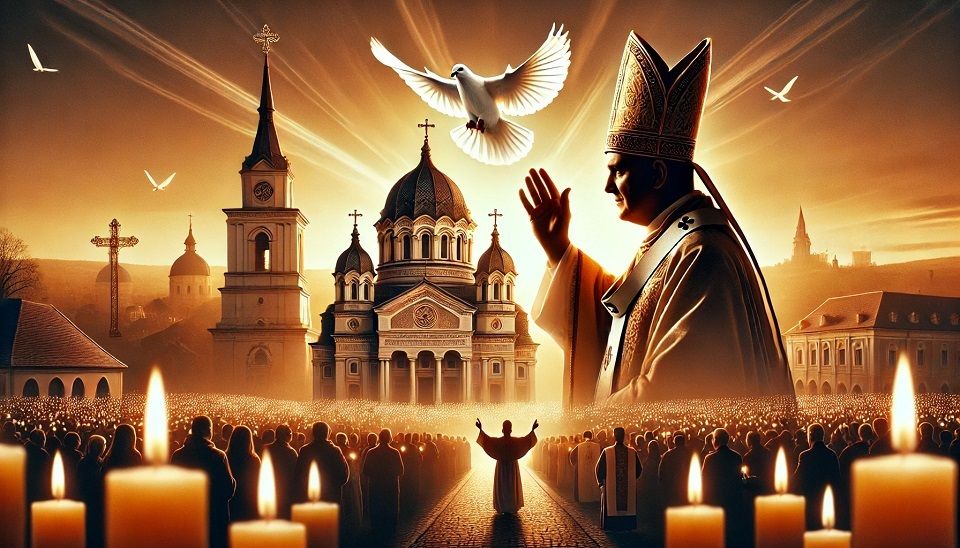Inter-war botanist Alexandru Borza
A remarkable scientific approach to Romania's rich nature

Steliu Lambru, 28.05.2023, 14:00
Nature has been viewed, in the past
two and a half centuries, as the cradle of humankind, of the individual human
being, of their families and of the nation. Nature has become a cult of the modern
man; therefore, plants, animals, air, water or stones have also become an
object of study for naturalists. In
Romania, priest Alexandru Borza was one of the most important botanists. He was
born in the Austro-Hungarian Empire in 1887 and died in Romania in 1971, at the
age of 84.
Borza’s educational background was a little bit unusual
for a scientist. Borza graduated from a Catholic theological seminary, then he
pursued a university program
with the Faculty of Sciences in Budapest. At the age of 26, Borza earned his
doctoral degree in natural sciences, in 1913. Until 1918, when the Romanian-inhabited
territories that had been part of the Austro-Hungarian Empire were included in then
the Kingdom of Romania, Borza was a teacher of natural sciences with the boys’ high-school in Blaj. After 1918, Borza’s career became increasingly
effervescent. Among other things, Borza was a rector of the University of Cluj,
a director of the Cluj Botanical gardens and a scientific director of the Nature
Monuments Commission. Alexandru Borza discovered more than 80 species of plants,
while other 20 were named in his honor. Alexandru Borza published around
500 texts and an ethnobotanic dictionary of Romania, with 11 common names for 2,
095 species of plants and also supervised the issuing of nine scientific periodicals.
Alexandru Borza was involved in strong awareness-raising campaigns regarding
the importance of nature in people’s lives through the articles he contributed
to the printed press, through pamphlets, public or radio-broadcast conferences.
Borza also made a leap forward, from the research of nature to the anthropological-folkloric
and eugenic research.
The fact that the Romanian
specialists participated in the Fourth Botany Congress in New York, in 1926,
gave them an impetus in their involvement in the defense of the environment. Here
is the historian Cosmin Koszor-Codrea explaining how the American model also
inspired the Romanians in their subsequent undertakings:
In 1926, the 4th International Botanical Congress
was held in New York, which gathered botanists from around the world. Borza was
also present and delivered a paper on insular flowers in the ecology section. Beside
the daily presentation sessions, the daily agenda included visits to the botanical
garden, excursions to the natural division of the Yellowstone natural park,
Niagara Falls and Rocky Mountains. After he returned to Romania he planned,
together with the zoologist Popovici-Dimbosanu the first Romanian National
Congress of Naturists, to be held in Cluj, in 1928. Here they gathered, on the
same agenda, secondary school teachers, representatives of Hungarian, Romanian,
and German alpine associations, officials and living scientists of the period.
Amongst their aims there were many resolutions, the participants pushed forward
on the political agenda the reorganization of the natural history teaching
program in secondary schools, the recognition of the fact that the Danube Delta
is an ecological region, a region rich in bird species, and that the Retezat
Mountains should become a national park.
The following steps were the logical consequences of
the assumed objectives. With details on that, here is Cosmin Koszor-Codrea once again:
The Ministry of Agriculture and Domains, based on
their proposals, enacted in 1930 the Law of the protection of natural monuments.
The following year, the Royal Decree officially recognized the existence of the
Commission of Natural Monuments. In doing so, the law written by the commission
defined the following, QUOTE, the monuments of nature are those lands which,
due to the inhabitancy of animals and plants, have a special scientific and aesthetical
importance, as well as those which, through their natural beauty, scientific
interest, are meaning to be conserved and passed over to posterity. Within the
protection law fall also animals and plant species, as well as rocks, minerals
and fossils, UNQUOTE.
The history of the Retezat Nature Park,
founded in 1935, is proudly linked to the name of Alexandru Borza. There the preservation
of nature was taken to its highest, thanks to the involvement of the state and
the regulations that were put in place. In 1939, in The Carpathians magazine,
Borza published a list of 17 protected plant species. Among them, the
rhododendron, the Edelweiss and the white Egyptian lotus. Cosmin Koszor-Codrea told
us the ecologists focused on the Retezat
Massif the right from the
start.
The first region that matched this definition was the Retezat
Mountains, due to its unique geological formation, its fauna and flora, as well
as the answer it gave to the Romanian national identity. In the words of Borza,
QUOTE, The Retezat is, from all points of view, a holy land for science, is a sacred
monument of nature that has no comparison to other massifs in Romania. That is
why all our naturalists are considering it predestined by nature to become our
natural park, the Yellowstone of Romania. Here the young will carry the patriotic
education, they will feel in these mountains the air of freedom, that as
inherited by the Dacian king Decebalus, while it will feed their hearts with
pride by knowing this piece of land as something unique, in its own way, as a
symbol of our natural health, UNQUOTE.
Alexandru Borza was one of the most
prominent names of environment protection in inter-war Romania. Borza was also
one of the scientists who supported the necessity of Romanians’ being taught
basic natural history notions as part of the Romanian nation’s specific characteristics.





























